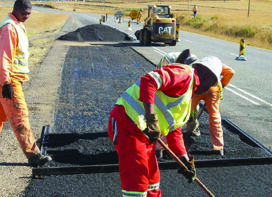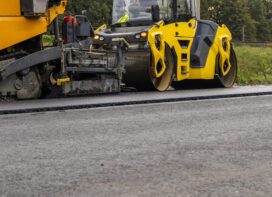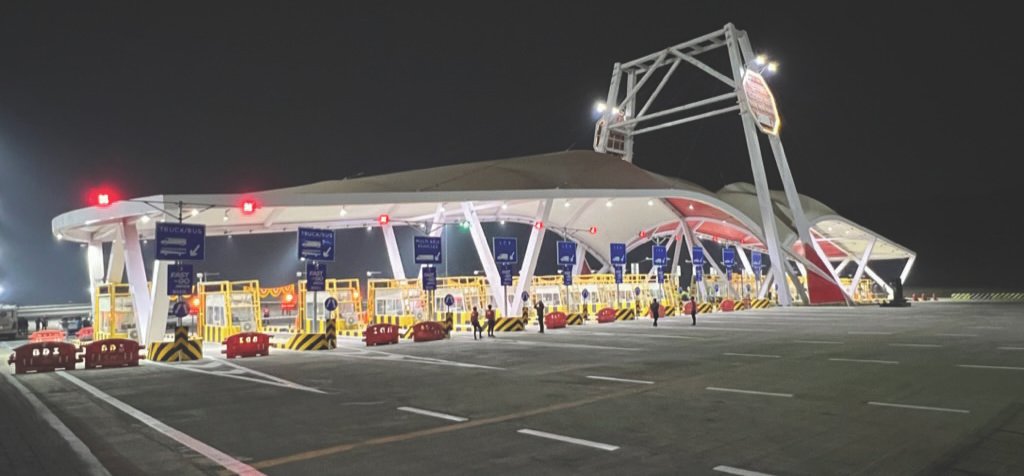

While various policy levers and conditions are expected to drive unprecedented economic boom in the lives of over 1.4 billion people, the significant growth in infrastructure in recent times has been a key propeller in the development of the country, writes Karan Sethi, Senior Assistant Vice President, Invest India.
In its 77th year of independence, India, today, is at the cusp of greater economic ascent. The country’s journey on the path of economic reforms has catapulted it to one of the world’s fastest-growing large economies. The reforms undertaken by the country in the previous decade, elevated levels of government spending, new incentives to boost manufacturing, and strong inherent fundamentals, have all been key to India’s post-pandemic recovery. These measures have also helped the economy combat high levels of inflation, which have affected the global economy. Further, with growth rates expected to average ~6.4% over the next ten years, the Indian economy is poised to become the world’s third largest within the next decade, and a $ 10 Trillion economy by 2035.
In the last ten years, India has invested over USD 1.2 trillion in building infrastructure. This has been driven by the government’s vision of building world-class infrastructure aimed at bringing down the cost of logistics in the country and turning India into an economic powerhouse. High-quality infrastructure has also aided in improving the ease of doing business and quality of life of the people, through universal uninterrupted power supply, availability of high-speed internet, and enhancing logistical connectivity.
This has been achieved through an optimal mix of Public Private Partnerships (PPP) and private investments in viable infrastructure projects, and budgetary investments in non-feasible but high social return projects. Moreover, to enable this staggering growth and the creation of infrastructure for tomorrow, India has been creating robust project/investment pipelines, world-class Development Finance Institutions, high-quality PPP contracts, conducive policies, and energising the industry’s execution capacity to deliver the scale of these projects. The adoption of technology by both users and the government has been driven by the digital revolution sweeping the country and transforming lives across the regional and economic strata.
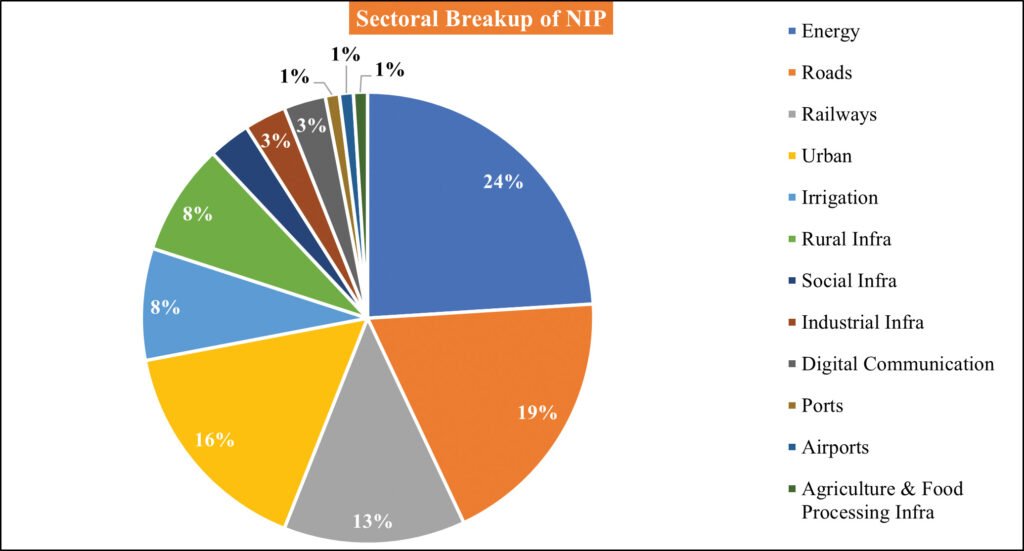
In the last six years alone, India has become the largest mobile data consumer and 2nd largest smartphone market in the world. Further, enabled by 470 Mn Pradhan Mantri Jan Dhan account beneficiaries, AADHAR & Mobile interlinking (JAM Trinity) the country has created unique digital identities for 1.25 Bn+ people (95%+ of the population), transforming the way the nation processes documents, invests, and makes payments. In this regard, the country’s BharatNet project is cited as the largest rural connectivity programme in the world and is a key component of the government’s Digital India initiative, aimed at transforming India into a digitally empowered society and knowledge economy.
National Infrastructure Pipeline
Through the National Infrastructure Pipeline (NIP), the government has successfully created a roadmap of infrastructure development for Ministries, investors, and developers. It has set forth in motion India’s target to invest over USD 1.4 Trillion (2020-2025) in infrastructure development spanning the length and breadth of the country.
The NIP intends to take infrastructure growth to the bottom of the pyramid, to positively impact every individual in the country by developing core and social infrastructure including highways, ports, modern railway stations, airports, bus terminals, world-class educational institutes, etc.
Infrastructure for New India
With a plan to double national highways in India to 200,000 kilometres by 2025, the ‘Bharatmala Pariyojana’ was launched as a holistic vision for developing 66,100 kilometres of additional road network including expressways, economic corridors, international and border roads. Remarkably, it has already aided in trebling the average pace of highway construction in the country from 12 km/day to 37 km/day in merely six years, with a target of achieving 50 Km/day of average construction. Not only this, the Ministry of Roads Transport and Highways is taking significant steps to reduce the country’s energy import bill and promote sustainability by aiming to achieve elevated levels of Electric Vehicles adoption by 2030 – 30% of private cars, 70% of commercial vehicles, and 80% of two-three wheelers.

The Ministry has also been a frontrunner in adopting technologies across the sector. In April 2023, the daily toll collection through the FASTag system achieved an all-time high of USD 24 Mn, with 1.16 crore transactions/day, marking a remarkable achievement in just over 2 years since implementation (Feb 2021). Further, the sector has also witnessed the adoption of mandatory employment of drones to enhance transparency in the monitoring of projects and the use of 3D automated machine guidance technology to speed up the pace of highway construction.
Fuelled by a growing working class and middle class, India’s aviation sector was clocking a consistent double-digit growth during the pre-COVID period, with the domestic aviation market setting the country to become the third largest aviation market in the world by 2025. Moreover, the government’s Regional Connectivity Scheme ‘UDAN – Ude Desh Ka Aam Naagrik’ has been instrumental in connecting the aspirational Tier II and Tier III cities, by doubling the number of operational airports from 74 (2014) to 148 and adding 425 new air routes, potentially reshaping travel in India. With passenger traffic expected to treble to 420 Mn/annum by 2030, around 90 new airports are expected to be built, and the aircraft fleet size is forecasted to double from 700 to 1,400.
With a target of moving 34 Mn passengers/day and transporting 9 Mn tons freight/day by 2030, Indian Railways has quintupled the average pace of commissioning new lines (2021 versus the period 2009-14) and undertaken new marquee projects such as Dedicated Freight Corridors, High-Speed Rail, Stations Redevelopment, and introduced the modern, made in India, Vande Bharat Trains. With these projects, the national transporter is poised to revolutionize logistics and passenger travel in the country. It has also made other moves on the technology front to provide comfort and convenience to passengers including installing Wi-Fi at railway stations, implementing a robust ticket booking website (IRCTC), enabling GPS enabled train tracking system, and creating a portal for booking freight/parcel services on the national transporter.
Focused on unlocking the true potential of India’s vast 7,500 Km coastline and waterways, to rationalise the cost of logistics and boost growth in EXIM cargo, the Ministry of Ports, Shipping and Waterways launched ‘SagarMala’ and the Maritime India Vision 2030. These programs are aimed at creating world-class mega ports and transhipment hubs, modernizing existing ports, augmenting connectivity, and creating port-centric economic clusters. The transformation of this industry will be a shot in the arm to India’s ambitions of becoming the factory to the world and doubling merchandise exports to USD 1 Trillion by 2030.
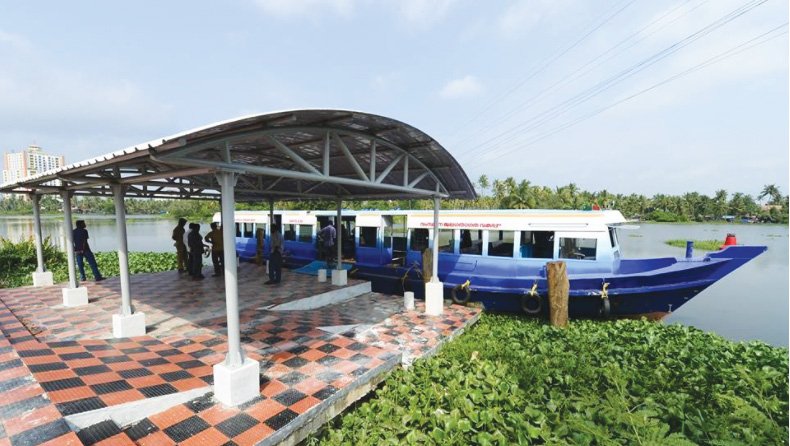
The sector is also observing the adoption of sustainable modes such as inland waterways and the country’s first water taxi in Kochi. In addition, the country’s efforts to improve logistics efficiency have been acknowledged in the 2023 World Bank Logistics Performance Index report, wherein the Logistics Data Bank has been attributed with lowering the dwell time to 2.6 days, contributing to a remarkable reduction of delays. For example: with the introduction of cargo tracking, dwell time in the eastern port of Visakhapatnam fell from 32.4 days in 2015 to 5.3 days in 2019.
India is undergoing a rapid rate of urbanization (40% of the total population in urban areas by 2030, increasing from 33% in 2020), and the government is creating significant urban physical infrastructure by leveraging technologies, to transform cities into centres of economic growth. In this regard, the Smart Cities Mission has resulted in the adoption of surveillance, sustainable waste and water management solutions, and urban transit systems. The total length of the metro network in the country is expected to grow ten-fold to 5,000 Km in the next two decades.
Similarly, technology-based institutional mechanisms have been put in place to address the coordination issues among various departments of the government, to reduce time delays and cost overruns that sometimes impact large infrastructure projects. To this effect, the Project Monitoring Group has played a key role in resolving inter-ministerial issues.
In addition, the Honourable Prime Minister launched the ‘PM GatiShakti – National Master Plan for Multi-Modal Connectivity’ aimed at leveraging technology to improve the planning and execution of infrastructure projects, to provide ‘Gati’ or speed to such developments. Through the national master plan, all Ministries and States are uploading details of current and future projects on a dynamic Geospatial Information Systems (GIS) based digital platform, with the purpose of breaking silos and working in sync for successful implementation of infrastructure.
Infrastructure development in India is undergoing a transformation; the numerous measures taken by the government to enable future development presents limitless opportunities to the private sector, to take the winning leap with young India.
 TrafficInfraTech Magazine Linking People Places & Progress
TrafficInfraTech Magazine Linking People Places & Progress

